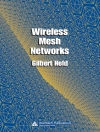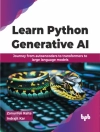Computer vision has been successful in several important applications recently. Vision techniques can now be used to build very good models of buildings from pictures quickly and easily, to overlay operation planning data on a neuros- geon’s view of a patient, and to recognise some of the gestures a user makes to a computer. Object recognition remains a very di cult problem, however. The key questions to understand in recognition seem to be: (1) how objects should be represented and (2) how to manage the line of reasoning that stretches from image data to object identity. An important part of the process of recognition { perhaps, almost all of it { involves assembling bits of image information into helpful groups. There is a wide variety of possible criteria by which these groups could be established { a set of edge points that has a symmetry could be one useful group; others might be a collection of pixels shaded in a particular way, or a set of pixels with coherent colour or texture. Discussing this process of grouping requires a detailed understanding of the relationship between what is seen in the image and what is actually out there in the world.
Roberto Cipolla & David A. Forsyth
Shape, Contour and Grouping in Computer Vision [PDF ebook]
Shape, Contour and Grouping in Computer Vision [PDF ebook]
Beli ebook ini dan dapatkan 1 lagi GRATIS!
Bahasa Inggris ● Format PDF ● ISBN 9783540468059 ● Editor Roberto Cipolla & David A. Forsyth ● Penerbit Springer Berlin Heidelberg ● Diterbitkan 2003 ● Diunduh 3 kali ● Mata uang EUR ● ID 6319087 ● Perlindungan salinan Adobe DRM
Membutuhkan pembaca ebook yang mampu DRM












